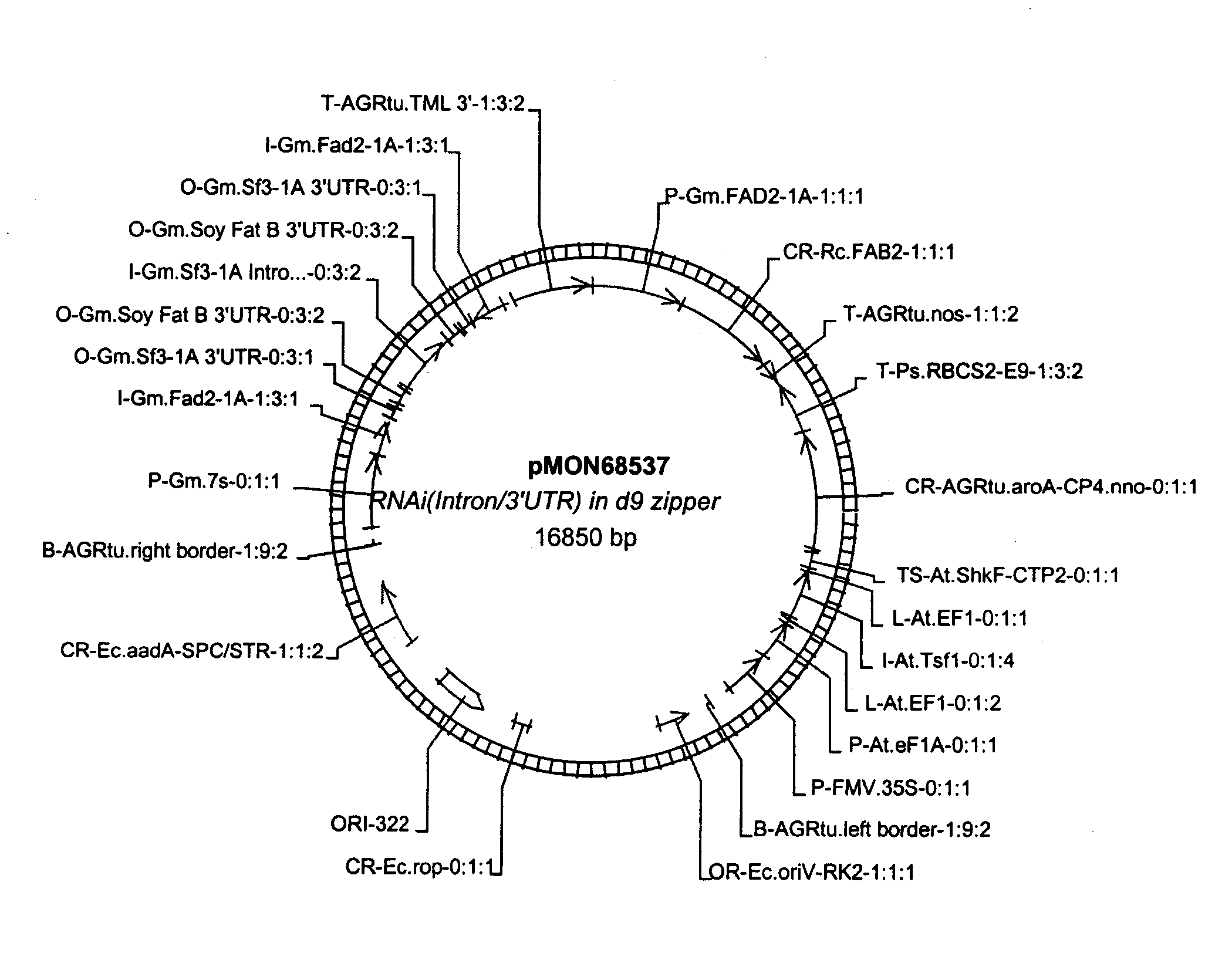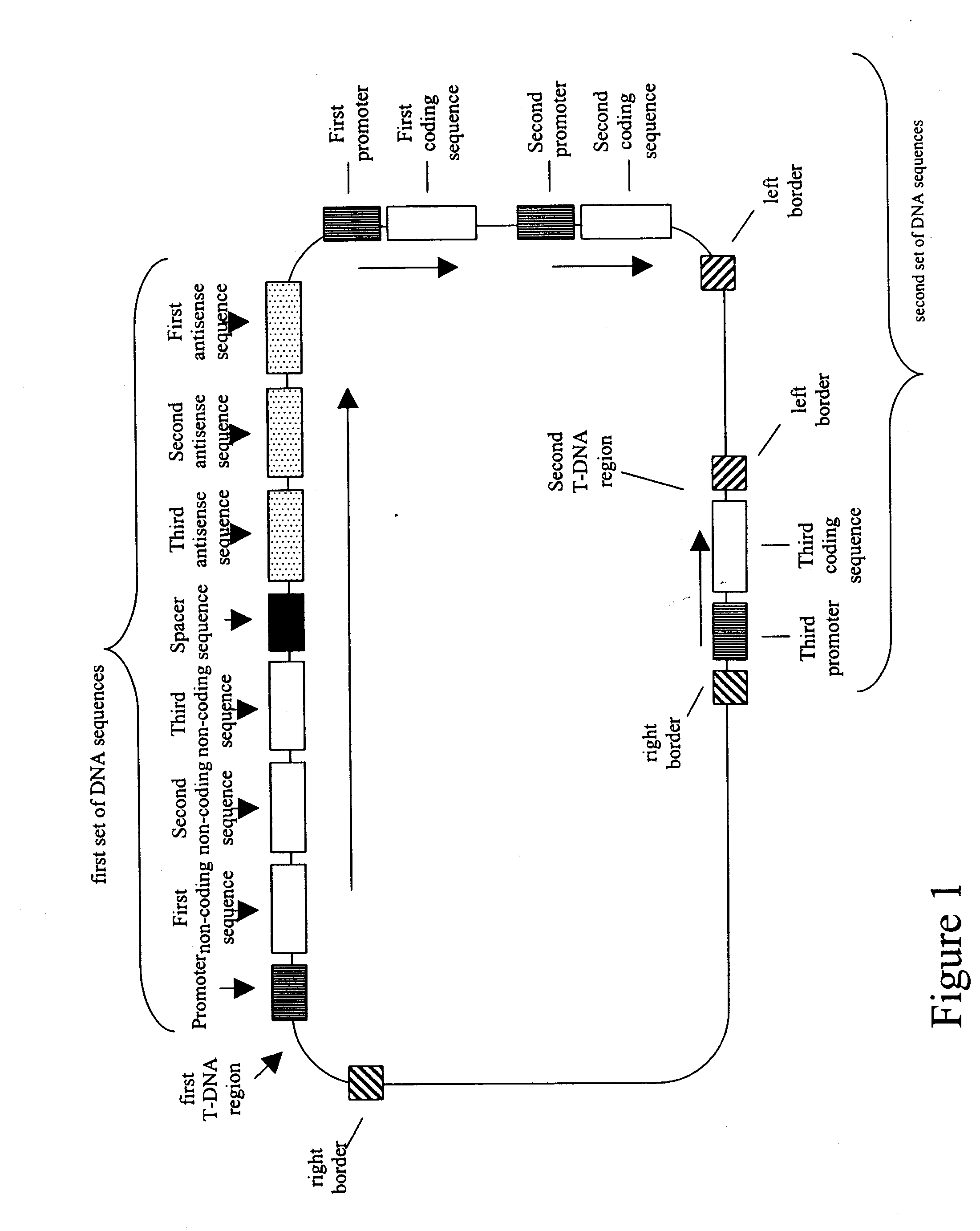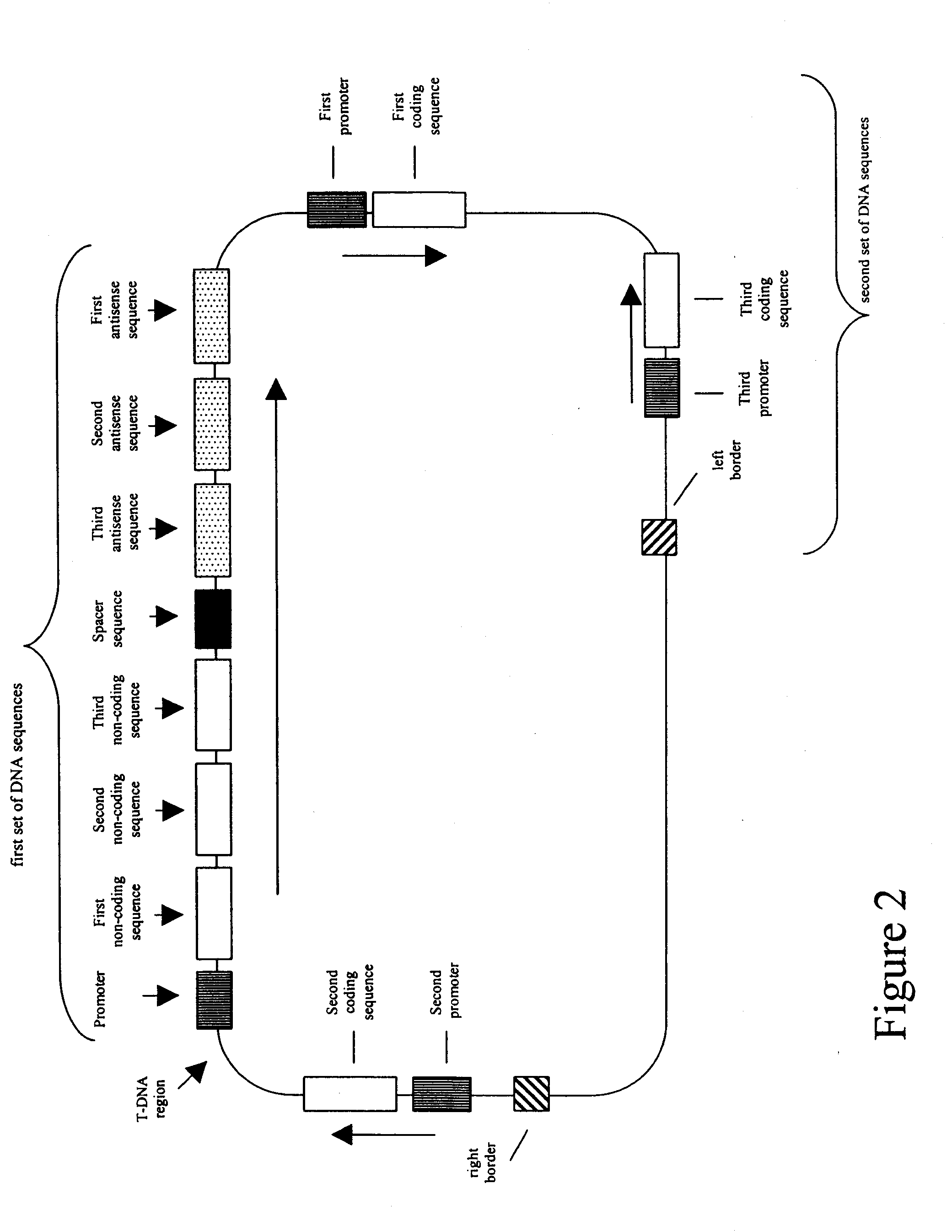Nucleic acid constructs and methods for producing altered seed oil compositions
a technology of nuclear constructs and modified seed oil, which is applied in the direction of biofuels, transferases, fuels, etc., can solve the problems of insufficient availability of soybean oil, lack of important food quality properties, and high cost of prior soybean oil
- Summary
- Abstract
- Description
- Claims
- Application Information
AI Technical Summary
Benefits of technology
Problems solved by technology
Method used
Image
Examples
example 1
Isolation of FATB-2 Sequences
[0162] Leaf tissue is obtained from Asgrow soy variety A3244, ground in liquid nitrogen and stored at −80° C. until use. Six ml of SDS Extraction buffer (650 ml sterile ddH20, 100 ml 1M Tris-Cl pH 8, 100 ml 0.25M EDTA, 50 ml 20% SDS, 100 ml 5M NaCl, 4 μl beta-mercaptoethanol) is added to 2 ml of frozen / ground leaf tissue, and the mixture is incubated at 65° C. for 45 minutes. The sample is shaken every 15 minutes. 2 ml of ice-cold 5M potassium acetate is added to the sample, the sample is shaken, and then is incubated on ice for 20 minutes. 3 ml of CHCl3 is added to the sample and the sample is shaken for 10 minutes.
[0163] The sample is centrifuged at 10,000 rpm for 20 minutes and the supernatant is collected. 2 ml of isopropanol is added to the supernatant and mixed. The sample is then centrifuged at 10,000 rpm for 20 minutes and the supernatant is drained. The pellet is resuspended in 200111 RNase and incubated at 65° C. for 20 minutes. 300 μl ammoniu...
example 2
Suppression Constructs
2A. FAD2-1 Constructs
[0166] The FAD2-1A intron #1 (SEQ ID NO: 1) is cloned into the expression cassette, pCGN3892, in sense and antisense orientations. The vector pCGN3892 contains the soybean 7S promoter and a pea rbcS 3′. Both gene fusions are then separately ligated into pCGN9372, a vector that contains the CP4 EPSPS gene regulated by the FMV promoter. The resulting expression constructs (pCGN5469 sense and pCGN5471 antisense) are used for transformation of soybean.
[0167] The FAD2-1B intron (SEQ ID NO: 2) is fused to the 3′ end of the FAD2-1A intron #1 in plasmid pCGN5468 (contains the soybean 7S promoter fused to the FAD2-1A intron (sense) and a pea rbcS 3′) or pCGN5470 (contains the soybean 7S promoter fused to the FAD2-1A intron (antisense) and a pea rbcS 3′) in sense or antisense orientation, respectively. The resulting intron combination fusions are then ligated separately into pCGN9372, a vector that contains the CP4 EPSPS gene regulated by the FMV...
example 3
Combination Constructs
[0176]FIGS. 7-15, promoters are indicated by arrows, encoding sequences (both coding and non-coding) are indicated by pentagons which point in the direction of transcription, sense sequences are labeled in normal text, and antisense sequences are labeled in upside-down text. The abbreviations used in these Figures include: 7Sa=7Sα promoter; 7Sα′=7Sα′ promoter; Br napin=Brassica napin promoter; FMV=an FMV promoter; ARC=arcelin promoter; RBC E9 3′=Rubisco E9 termination signal; Nos 3′=nos termination signal; TML 3′=tml termination signal; napin 3′=napin termination signal; ′3 (in the same box as FAD or FAT)=3′ UTR; 5′ (in the same box as FAD or FAT)=5′UTR; Cr=Cuphea pulcherrima; Gm=Glycine max; Rc=Ricinus communis; FAB2=a FAB2 allele of a stearoyl-desaturase gene; and Intr or Int=intron.
3A. dsRNA Constructs
[0177]FIGS. 7-9 depict nucleic acid molecules of the present invention in which the first sets of DNA sequences are capable of expressing dsRNA constructs....
PUM
| Property | Measurement | Unit |
|---|---|---|
| volume | aaaaa | aaaaa |
| volume | aaaaa | aaaaa |
| volume | aaaaa | aaaaa |
Abstract
Description
Claims
Application Information
 Login to View More
Login to View More - R&D
- Intellectual Property
- Life Sciences
- Materials
- Tech Scout
- Unparalleled Data Quality
- Higher Quality Content
- 60% Fewer Hallucinations
Browse by: Latest US Patents, China's latest patents, Technical Efficacy Thesaurus, Application Domain, Technology Topic, Popular Technical Reports.
© 2025 PatSnap. All rights reserved.Legal|Privacy policy|Modern Slavery Act Transparency Statement|Sitemap|About US| Contact US: help@patsnap.com



